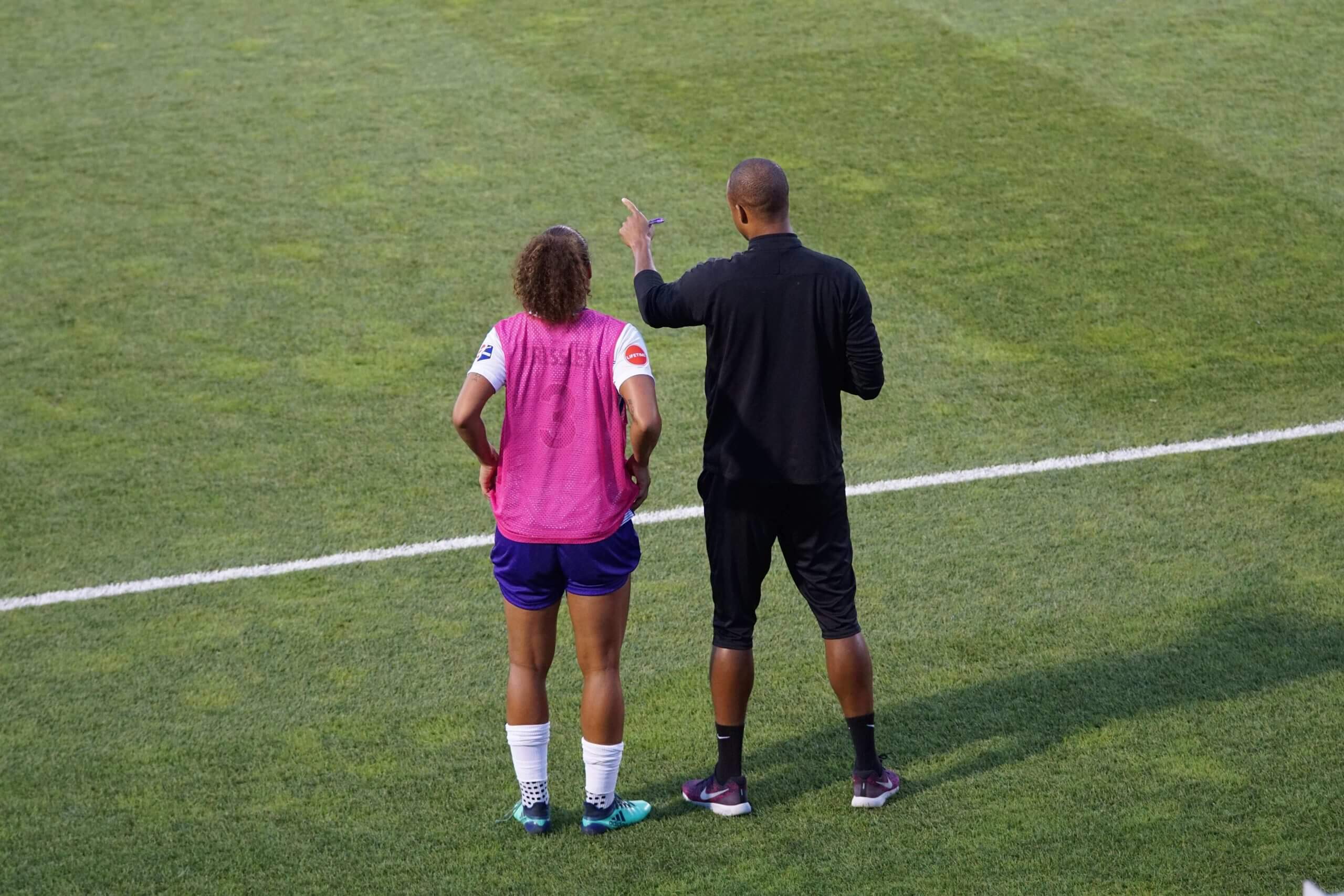Kramer was notorious for his pop-ins on “Seinfeld.” And while athletic directors don’t typically throw open a gym door and burst into practice Kramer-style, they do “pop in” on their coaches from time to time to check on the programs.
What do they see?
They see coaches leading physical training drills and running their players through new schemes or a series of arm and leg exercises – constantly pushing them to raise the bar on their physical abilities.
But how often do you see the coach exercising a student-athlete’s mind? Ever see a coach stretch a player’s mental capacity before jumping into a sweat-drenched practice? Sure, the student-athletes might be in great physical shape, but how fit are their agile minds?
Physically challenging them is just half the package when it comes to building a successful team. Students need to be challenged mentally, too. More importantly, according to responses we’ve collected from high school student-athletes, players want to be challenged mentally.
That’s why it is crucial for high school coaches to foster an environment where physical and mental growth are at the epicenter of their development. Once that’s accomplished, coaches can push student-athletes above and beyond previous goals. That’s how records are broken.
Imagine how much more clutch the clean-up hitter would be if he walked to the plate with his mind as strong as his body.
It’s all about a coach’s capacity to shape an elite mindset, which is the focus of Ecsell Sports’ Challenge theme. When coaches push their players outside their physical and mental comfort zones – while being mindful of stress and individual expectations – amazing things happen.
About that comfort zone …
True growth comes from a state of discomfort. It’s hard to become a better player and a better person if you are comfortable with where you are. But when you’re uncomfortable, that’s when the growth begins.
Coaches ask their players to improve every day. Make better passes, play tougher defense, jump higher, run faster. But when is the last time the coach worked on improving how they coach? Is the coach pushing themself out of their comfort zone and beyond their familiar Xs and Os and reaching beyond the way they’ve “always done things”?
Because, the fact is, humans avoid creating discomfort for themselves. We tend to do the exact opposite by finding order or a routine that becomes hard to break – limiting our growth.
Team growth and performance are certainly no exception. Results in a state of “order” will wane and eventually decline. And the only way to offset this inevitable slide is with a challenge. It is a coach’s job to apply the right amount of challenge to each team member. Challenge causes discomfort, which leads to growth, and, as a result, this skill becomes a key responsibility of high-performing coaches, the ones who are in the best position to make the most profound impact on the student-athlete experience.
But the challenge is only going to work if …
Challenging a player and getting them to believe in that challenge will only be successful after the coach has built a trust-based relationship through the student-athlete’s eyes. And that means providing a psychologically safe team environment that challenges each student to create growth in their respective sport.
Building that trust-based relationship needs to come from the heart. And coaches who speak to the heart of the player have an advantage. Speak to the heart, and the mind will follow. In other words, if their hearts believe it, their minds will justify it. And true growth begins.
Our Challenge theme highlights the coach’s ability to push athletes beyond their benchmarks. We focus on a coach’s ability to shape an elite mindset by encouraging students to go outside their physical and mental comfort zones. And the key is to recognize that each person’s discomfort level is unique.
Take the story of Kayla Montgomery, for example – a long-distance runner who, despite being diagnosed at 15 with multiple sclerosis, won three state championships her senior year in cross country, indoor and outdoor track. Luckily for Kayla, her high school track coach personified the fundamental coaching formula we preach, teach and measure for teams.
Kayla’s coach created a trusting relationship, implemented performance-enhancing processes and systems, and created an environment of healthy discomfort by pushing her to a breaking point at times, but always with Kayla’s goals in mind.
A poor coach, for example, might have pushed Kayla without first creating a safe, trusting environment, but that would have hindered her growth. Likewise, her coach could have instituted the best track fundamentals and created a wonderful relationship, but she likely would not have achieved her championships without pushing her into discomfort.
What students say about being challenged
Consider some of the comments we’ve received from student-athletes who have participated in our program. We asked them about their coaches and how they are challenged within their respective sports. Here are some of their responses:
“Coach pushes us to an uncomfortable zone and tries to keep us there so we can grow and learn from it. He also really emphasizes how the sport is a mindset.”
“This season has really challenged me to view the technical parts of the game differently and have a different perspective on strategy of play. I think it is good to keep learning more about the game.”
“I think the drills we do in practice could be more challenging – not physically, but mentally. One thing we need to work on is decision-making and awareness. I think drills that make us do those things would make us better in that category.”
What we do, and how we do it
Of course, understanding what the challenges are and how they impact coaches and their student-athletes is one thing; understanding what coaches can do differently to improve is another.
Using a web-based, anonymous survey platform, Ecsell Sports compiles data on the student-athlete experience, then analyzes it and provides reports that measure growth over previous seasons and against similar programs at other schools. These detailed reports – provided to athletic directors and coaches – outline scores within Ecsell Sports’ six themes, including Challenge.
Ecsell Sports also works with coaches and ADs to develop an educational plan based on their results. We then provide online resources, which include elite performance training modules that help drive continuous improvement.
And that’s the best part: continuous improvement. The growth never stops. Championship teams all have a culture that recognizes they are never a finished product and that true growth is a never-ending journey – in school and in life.



